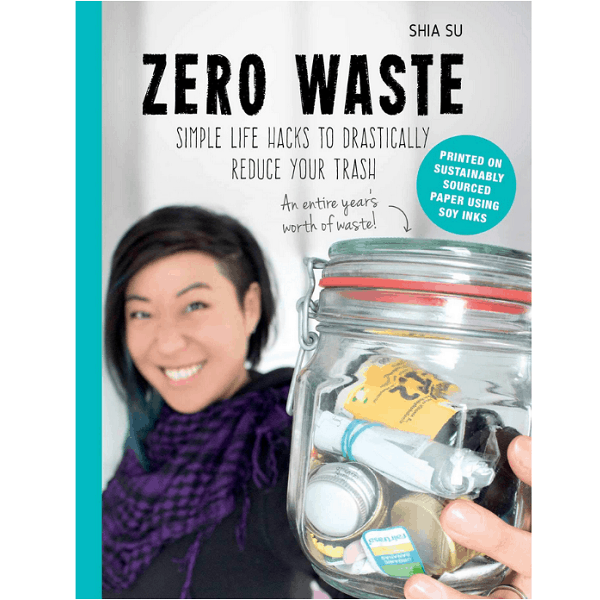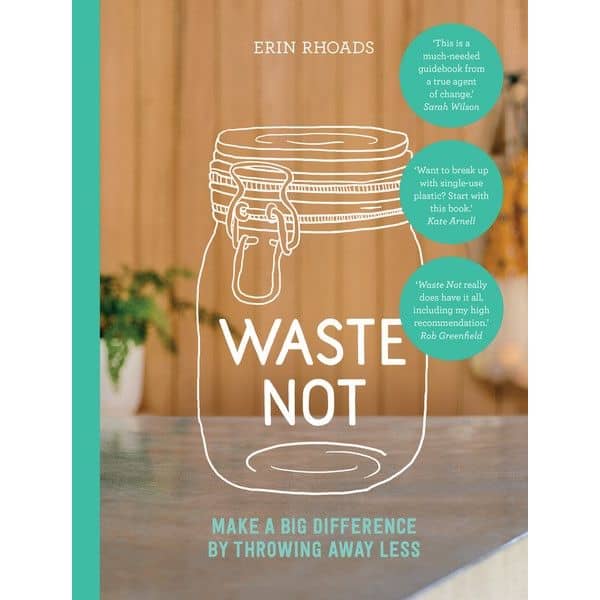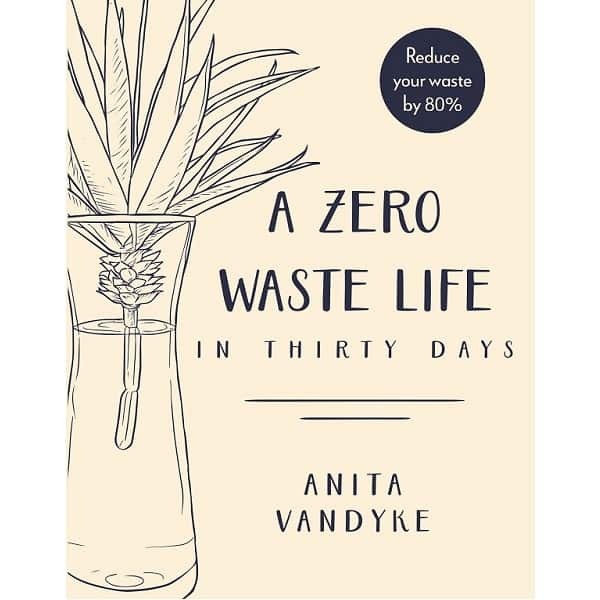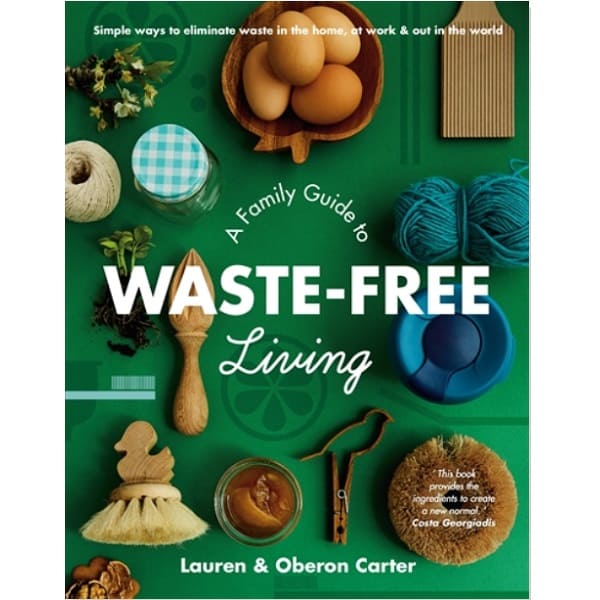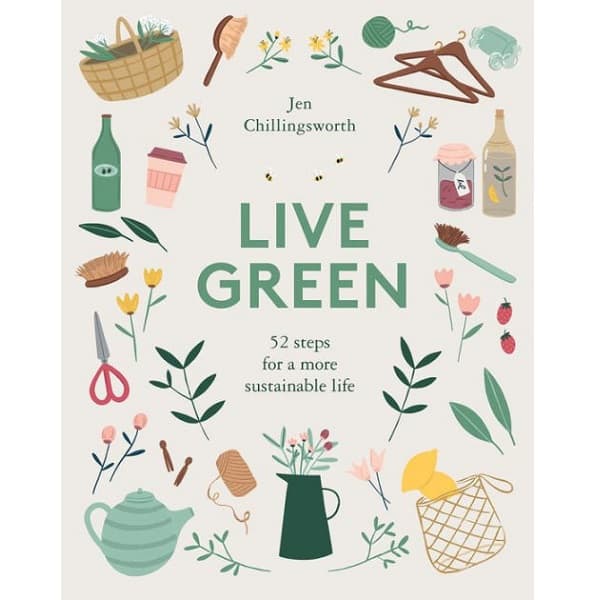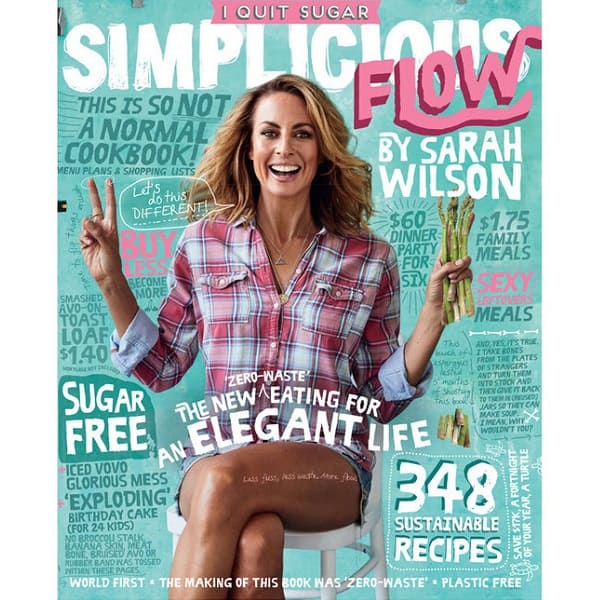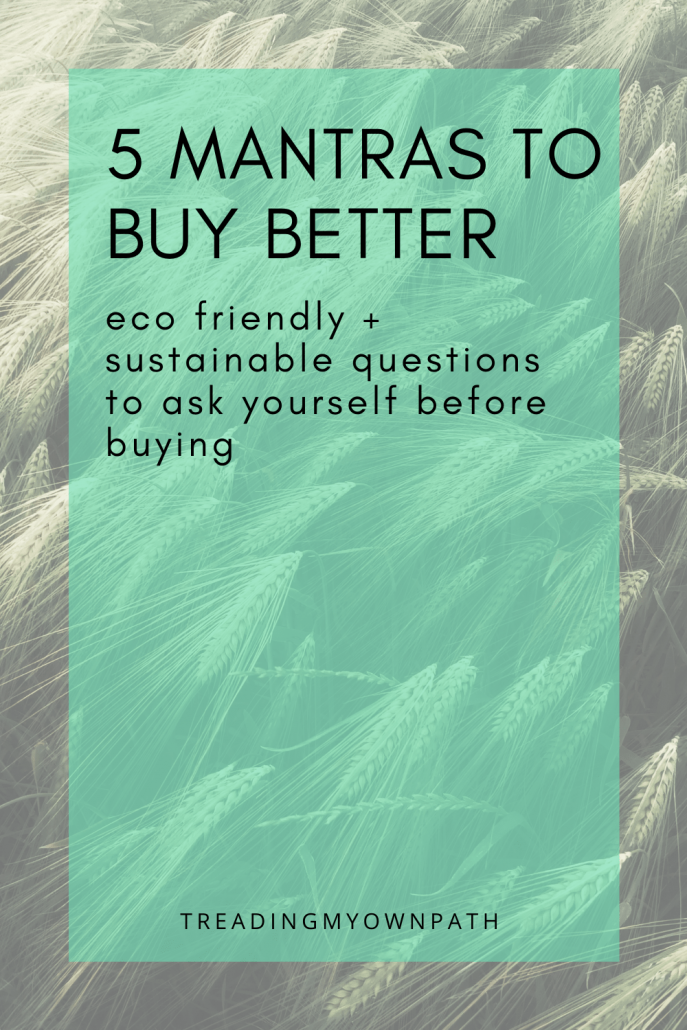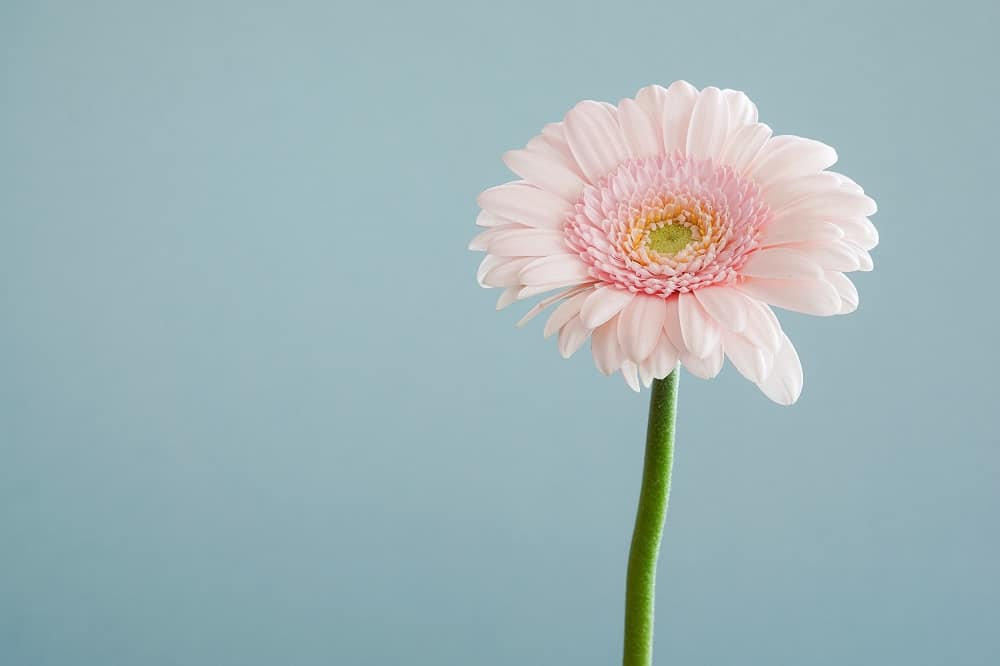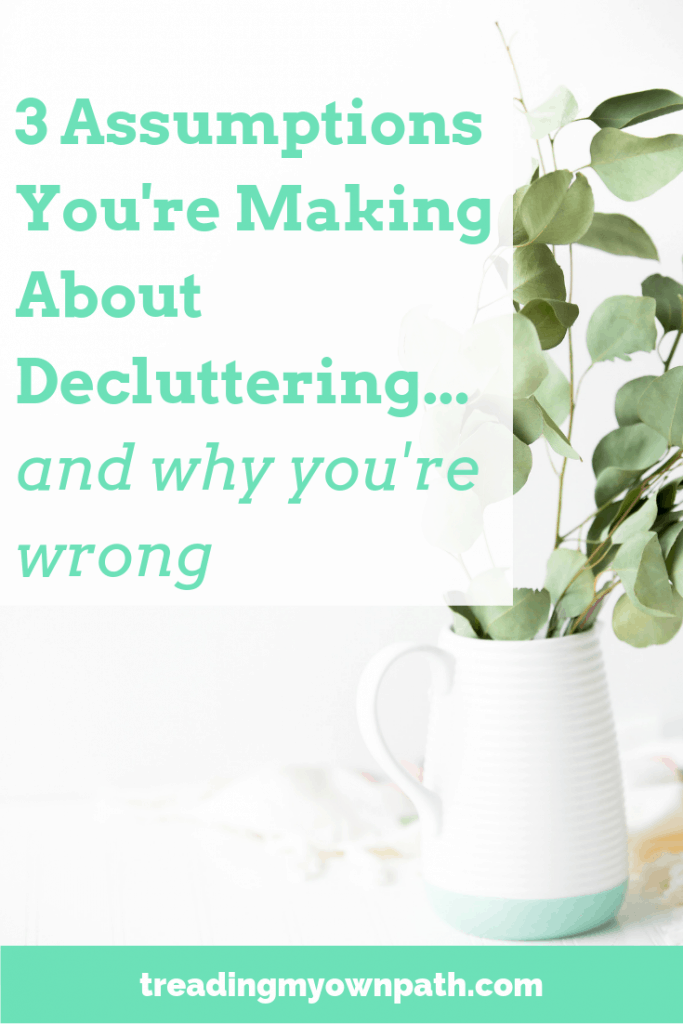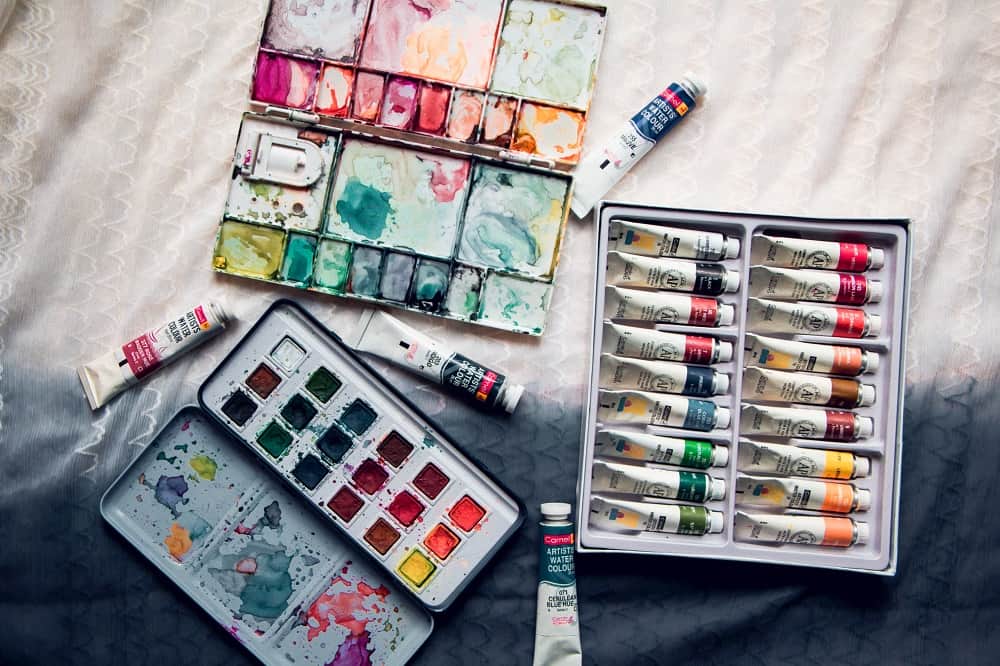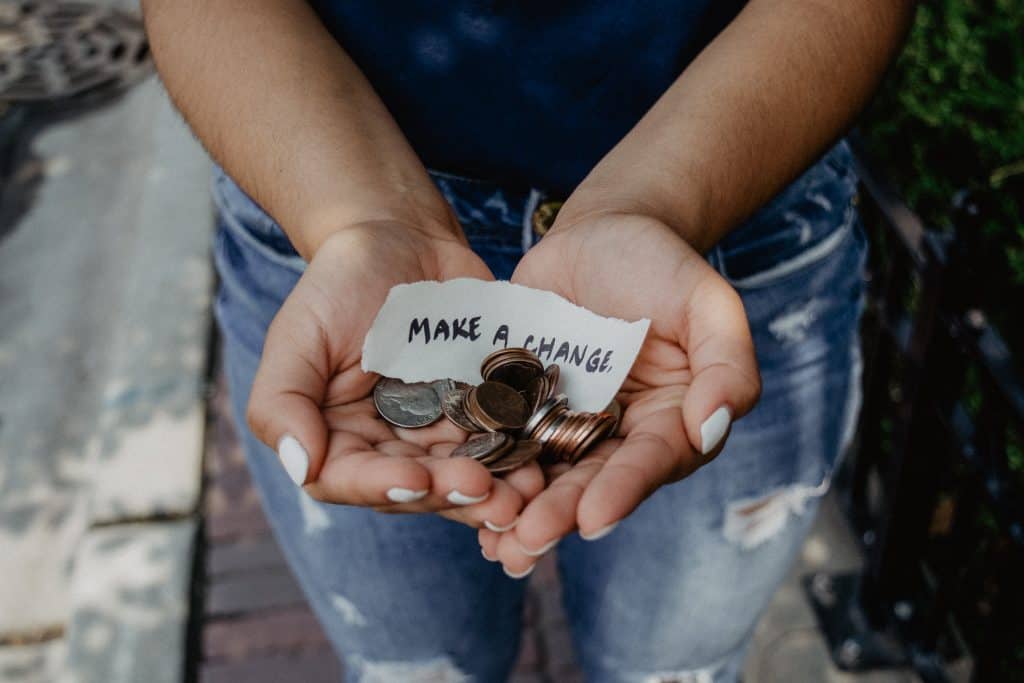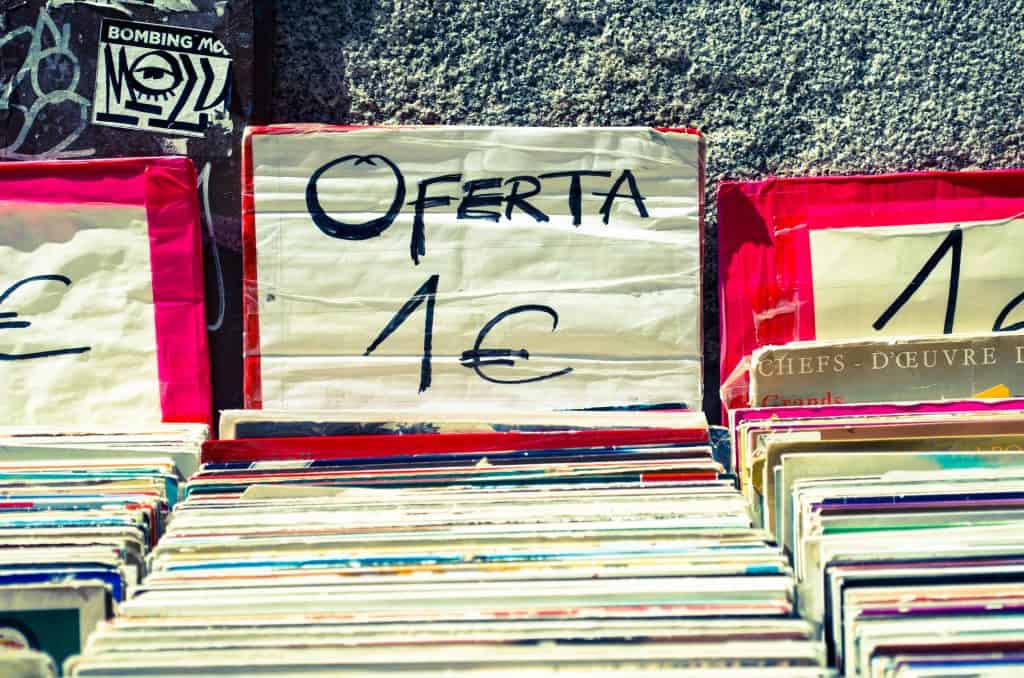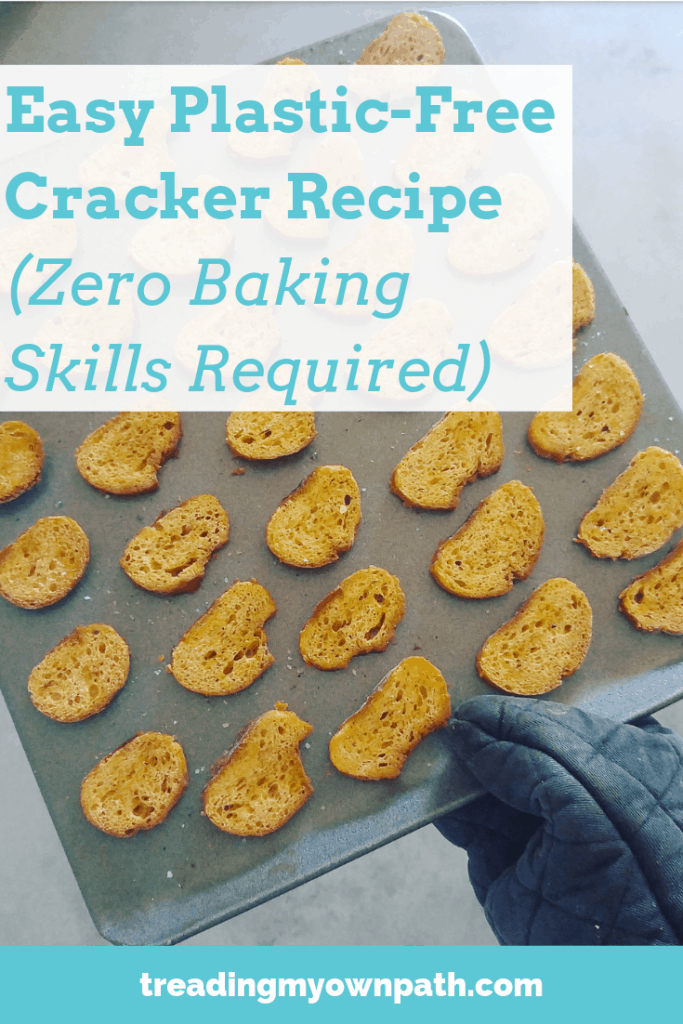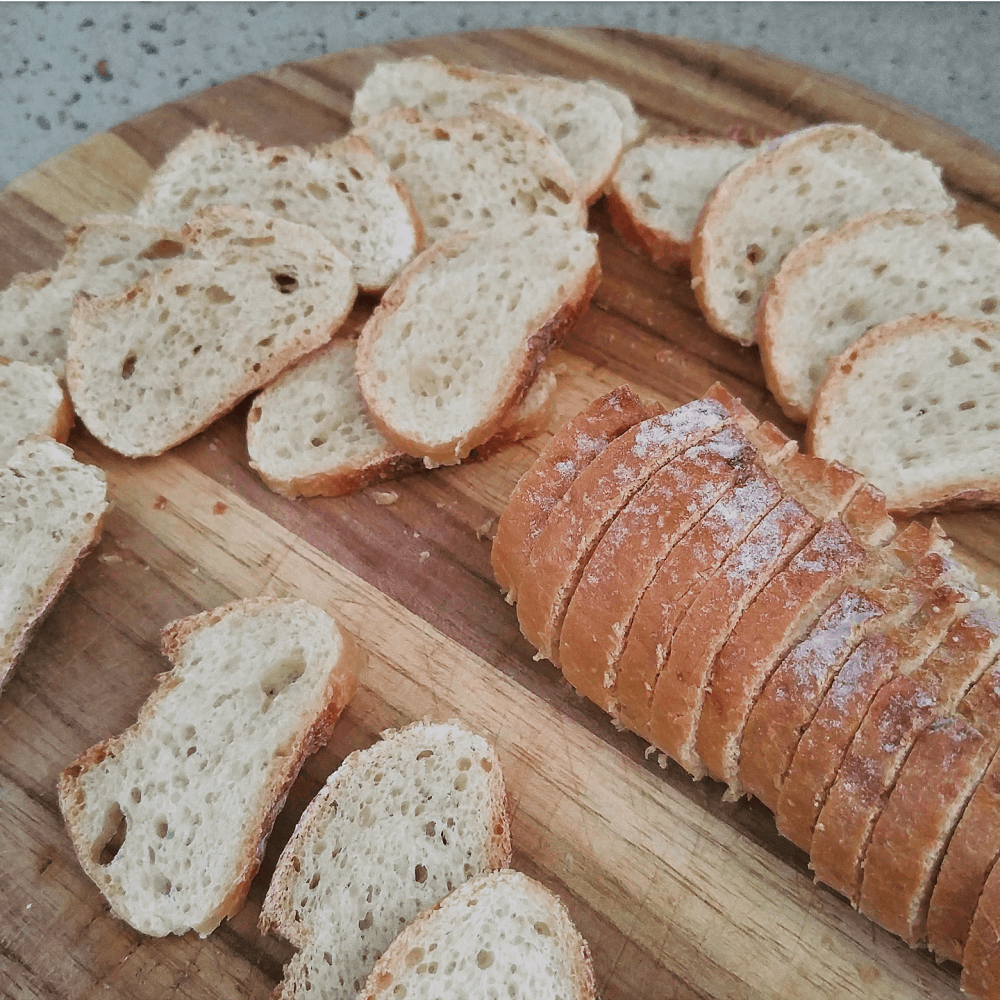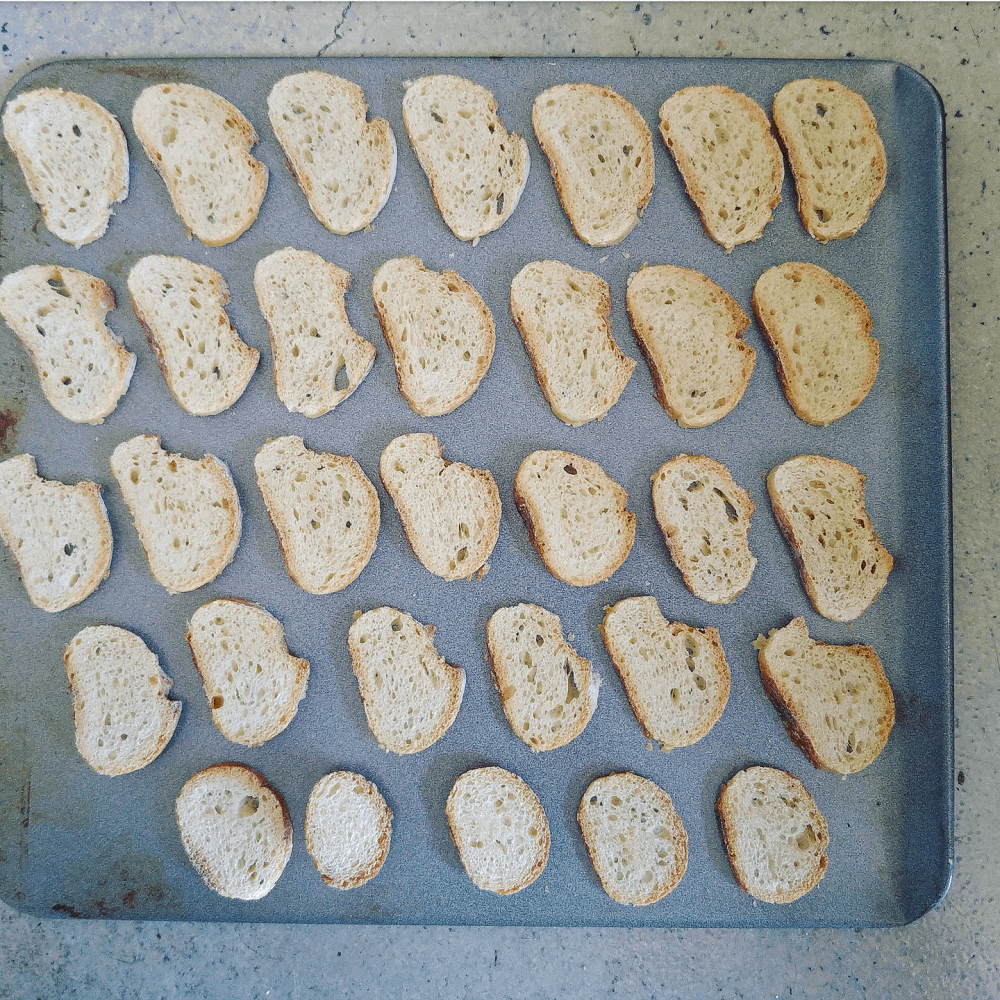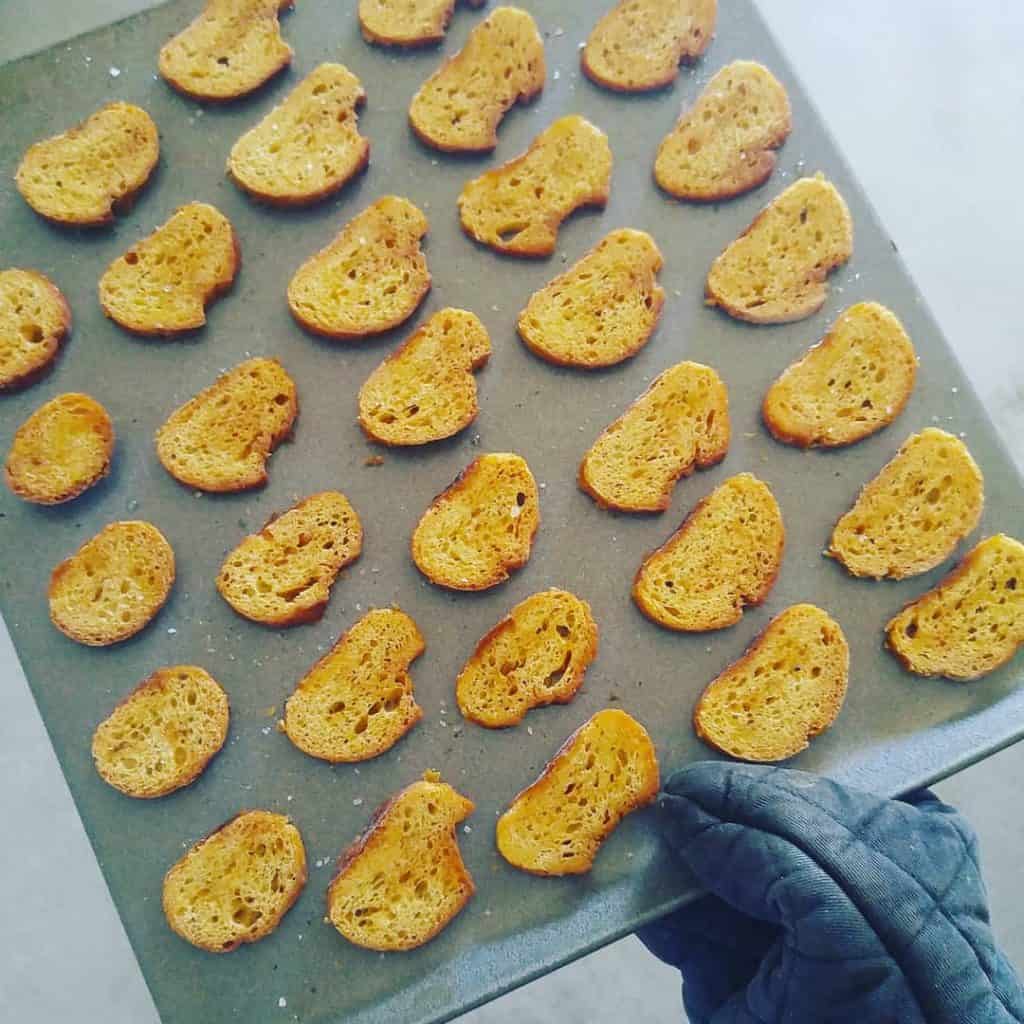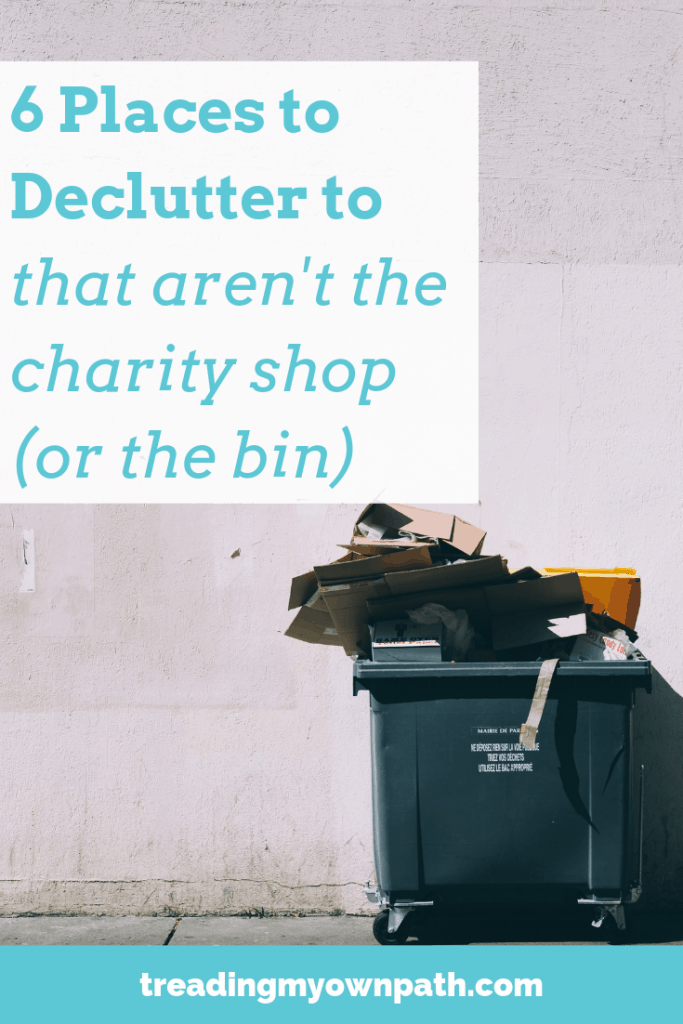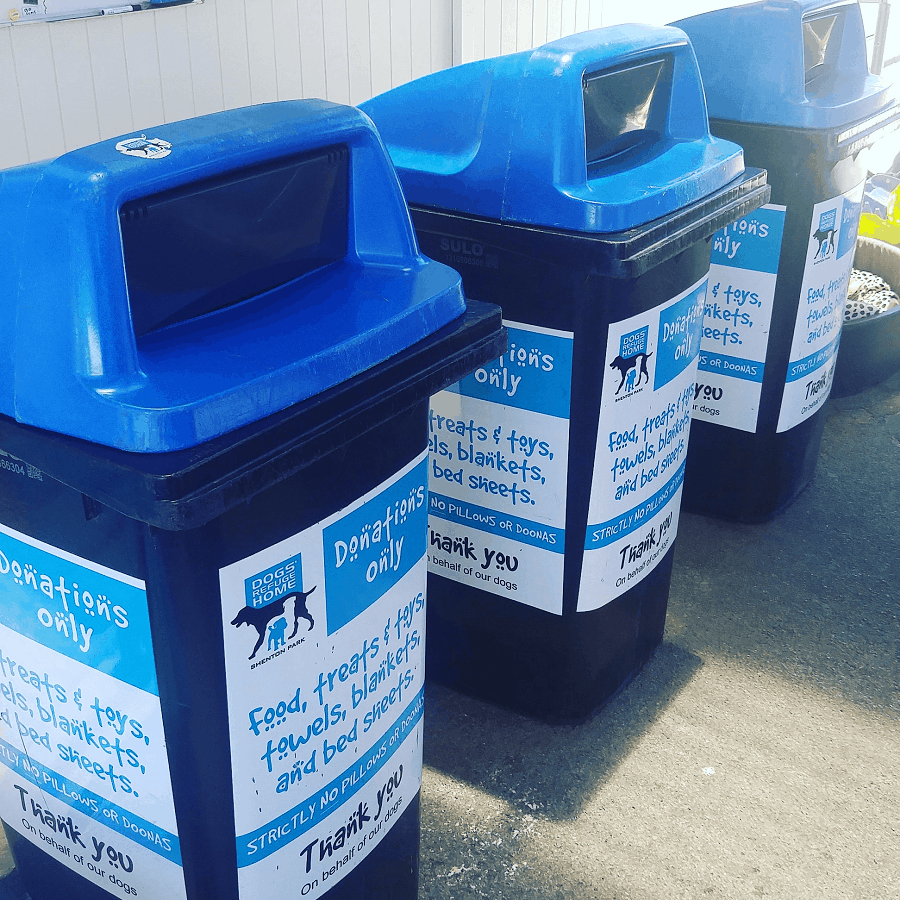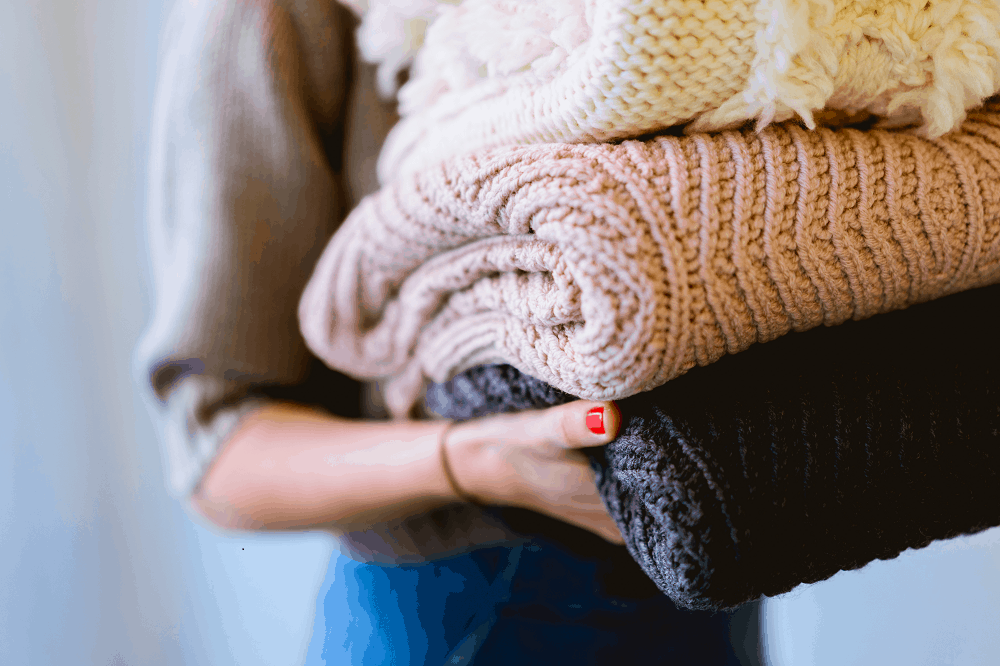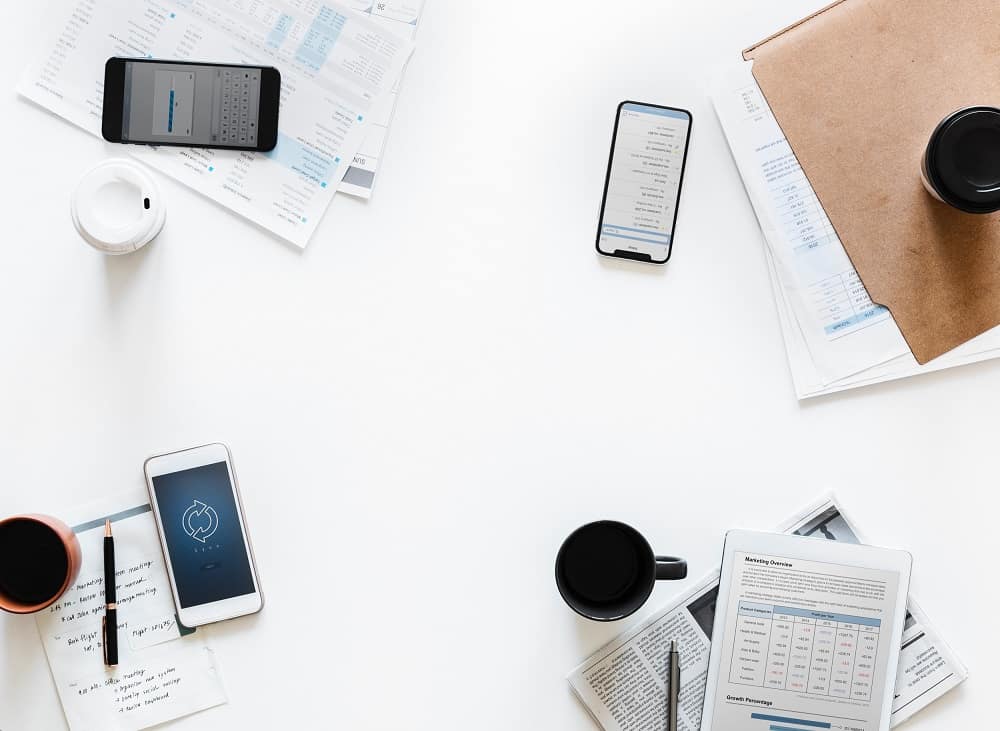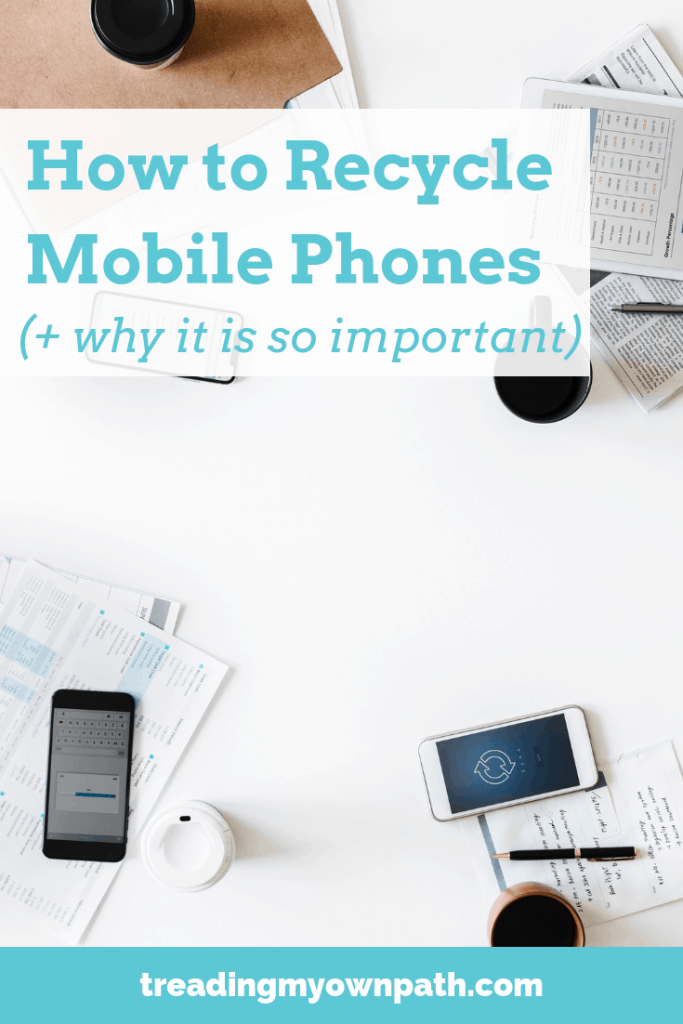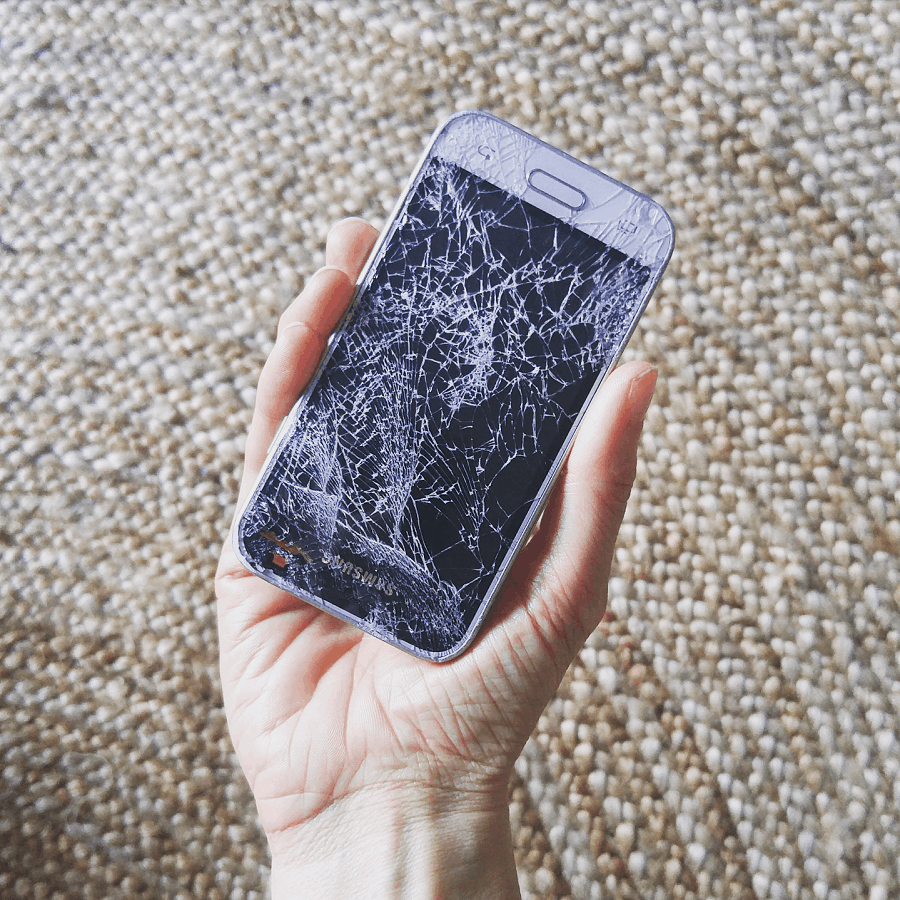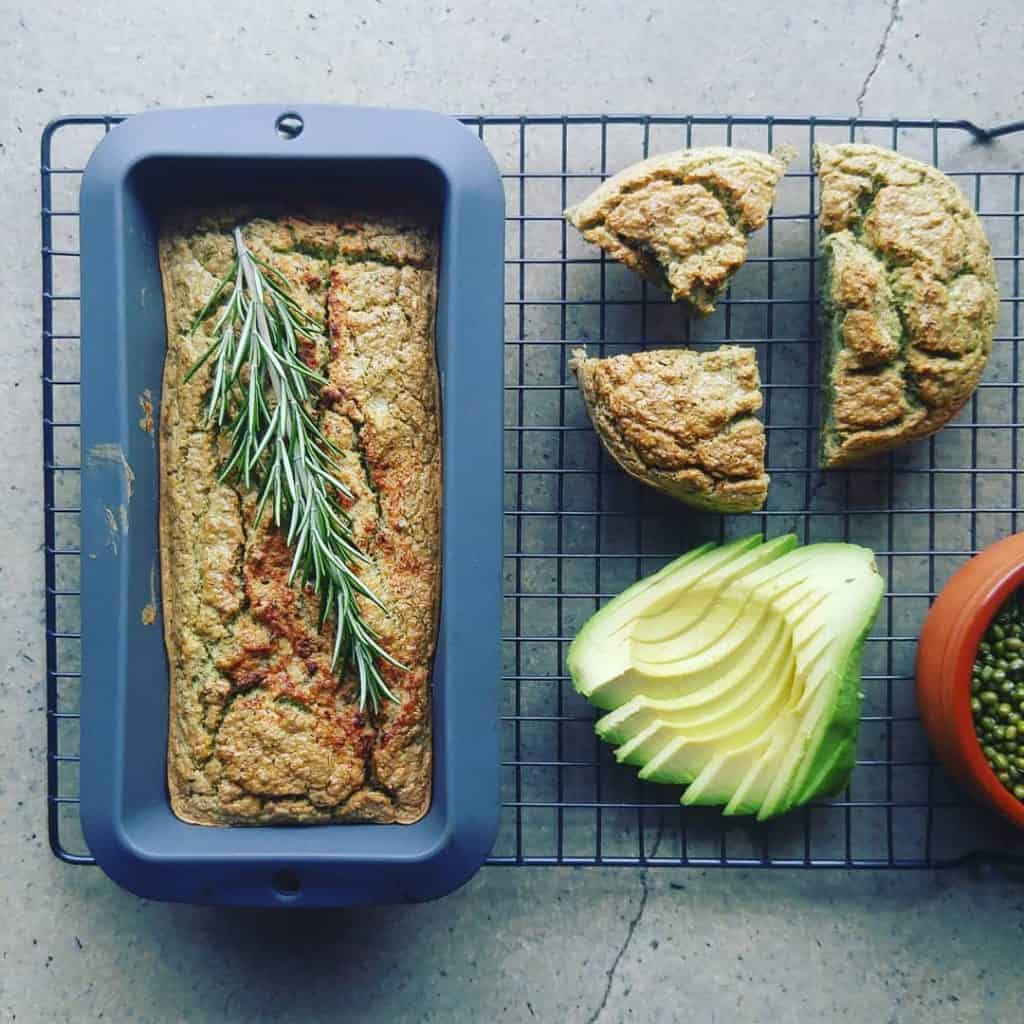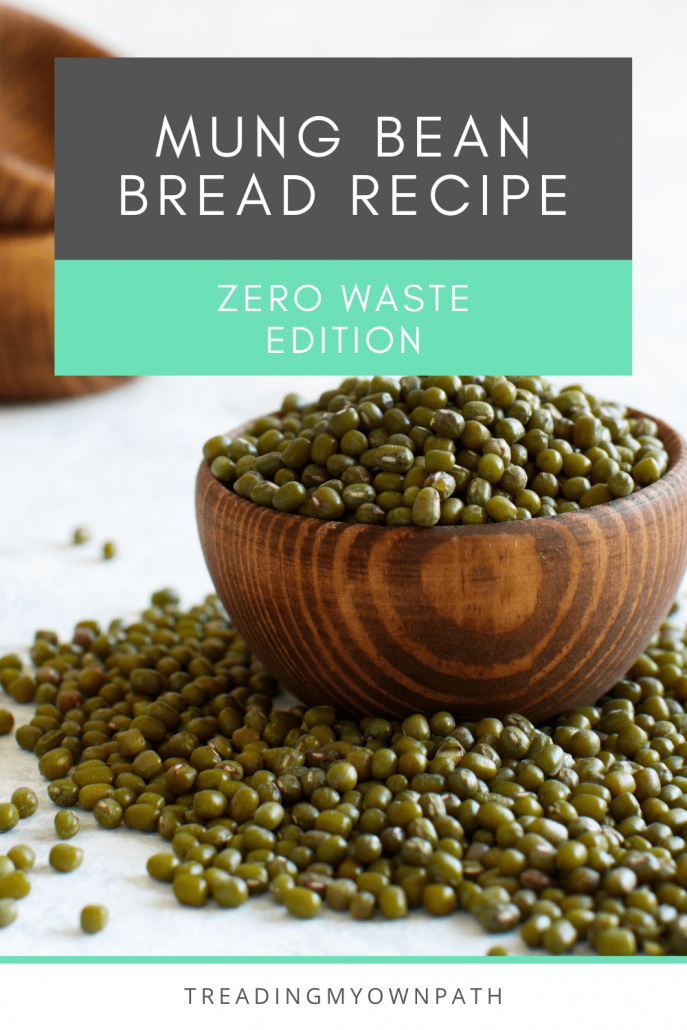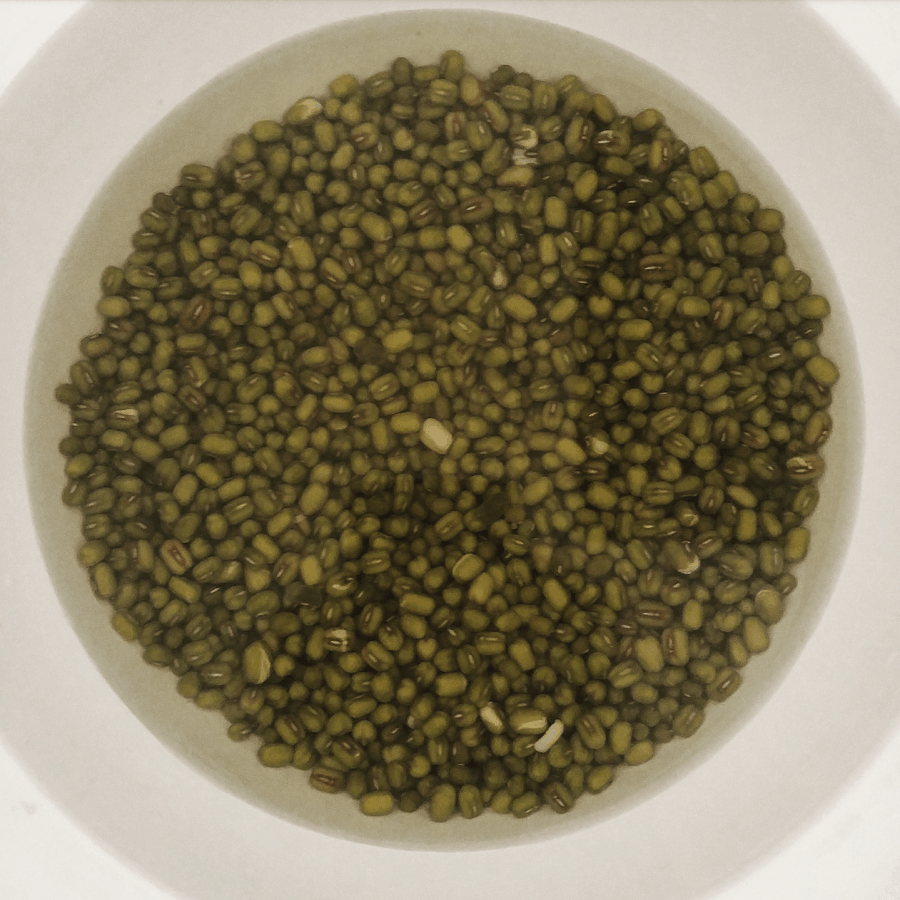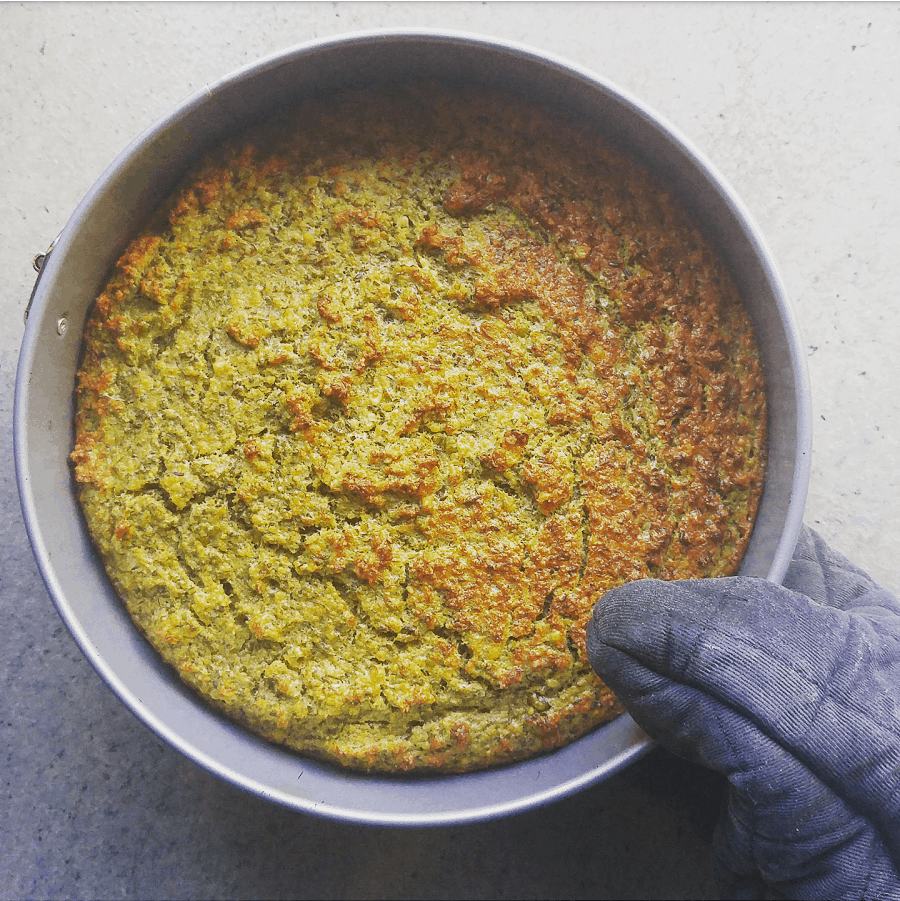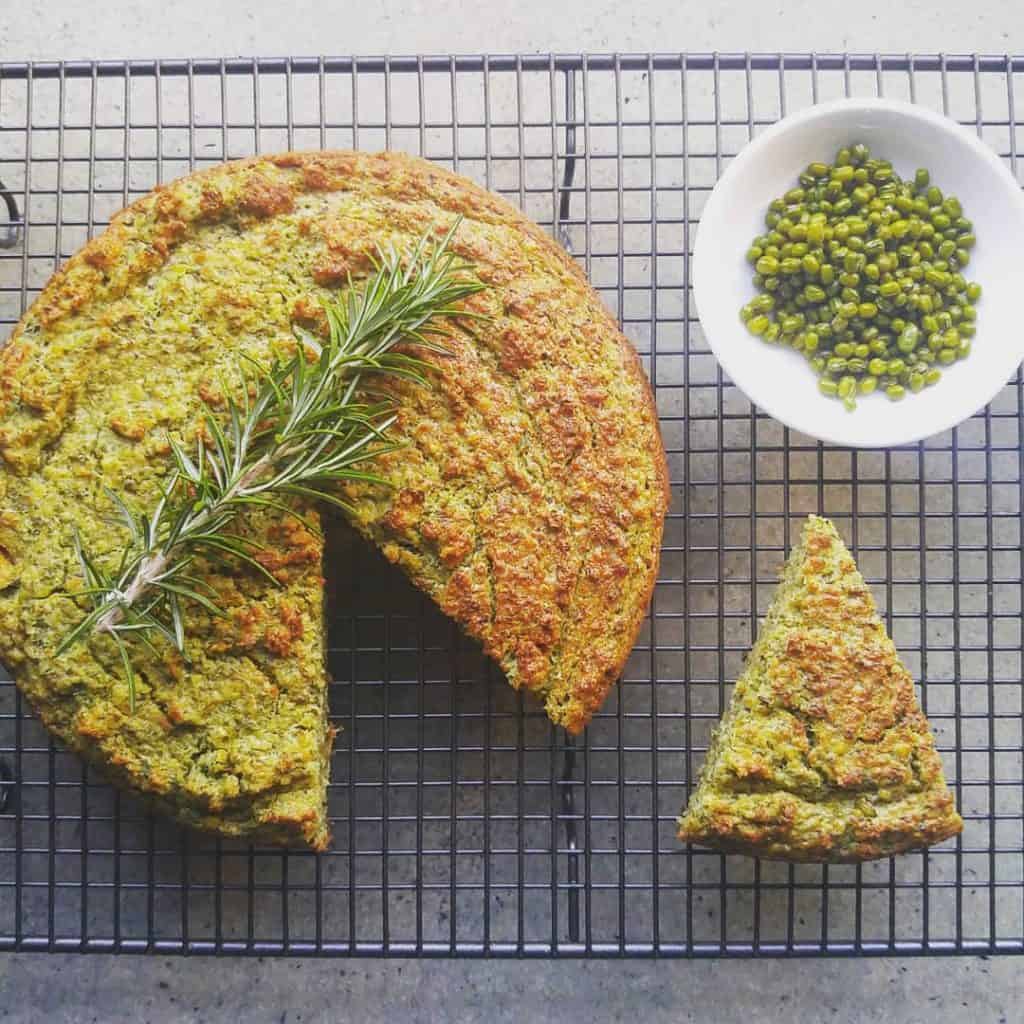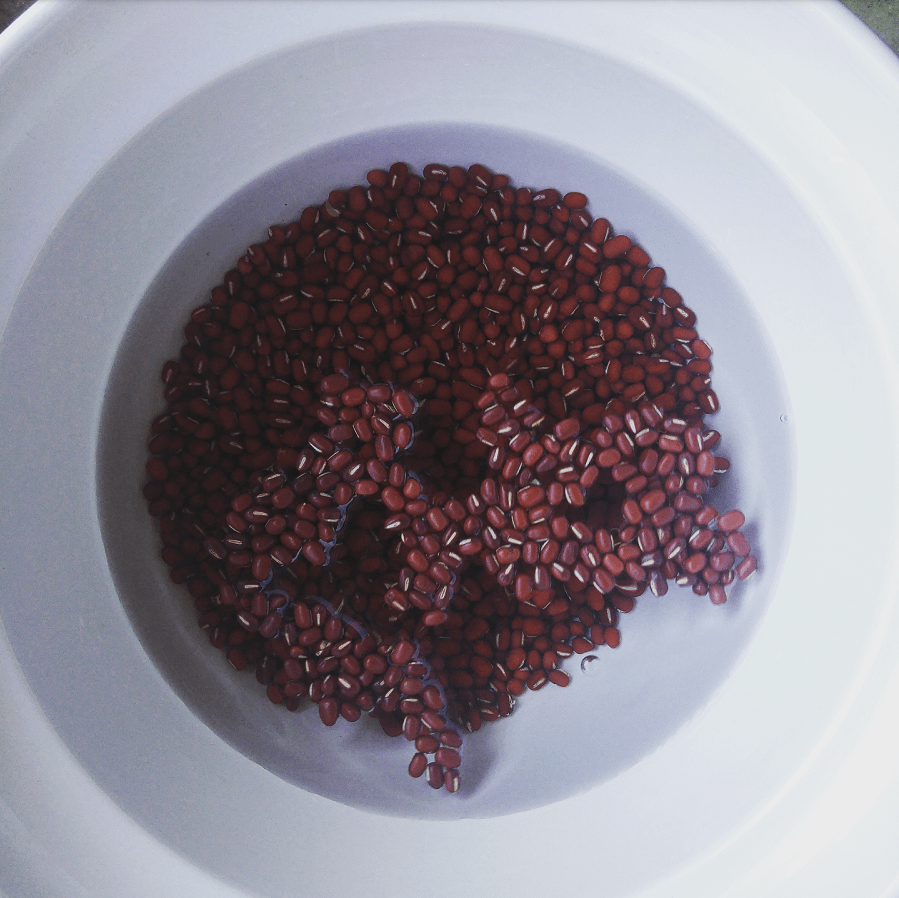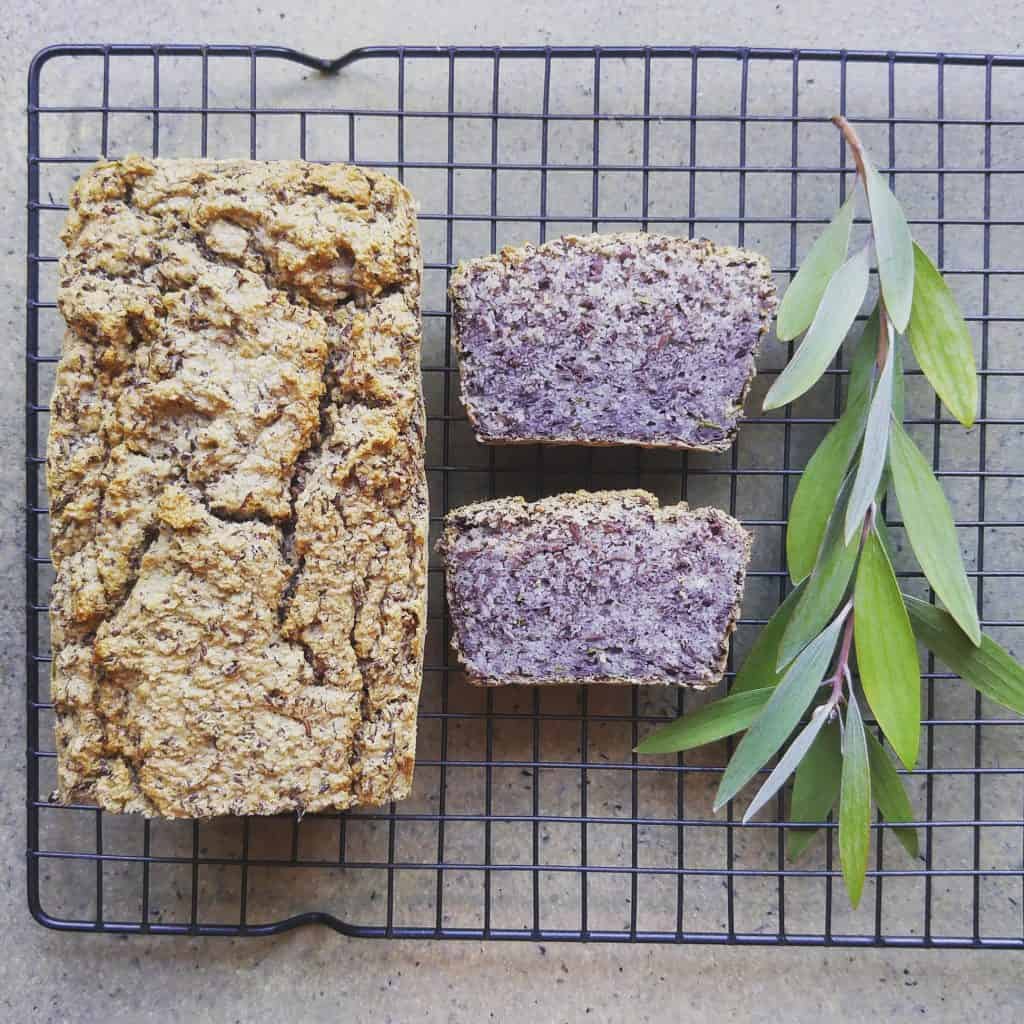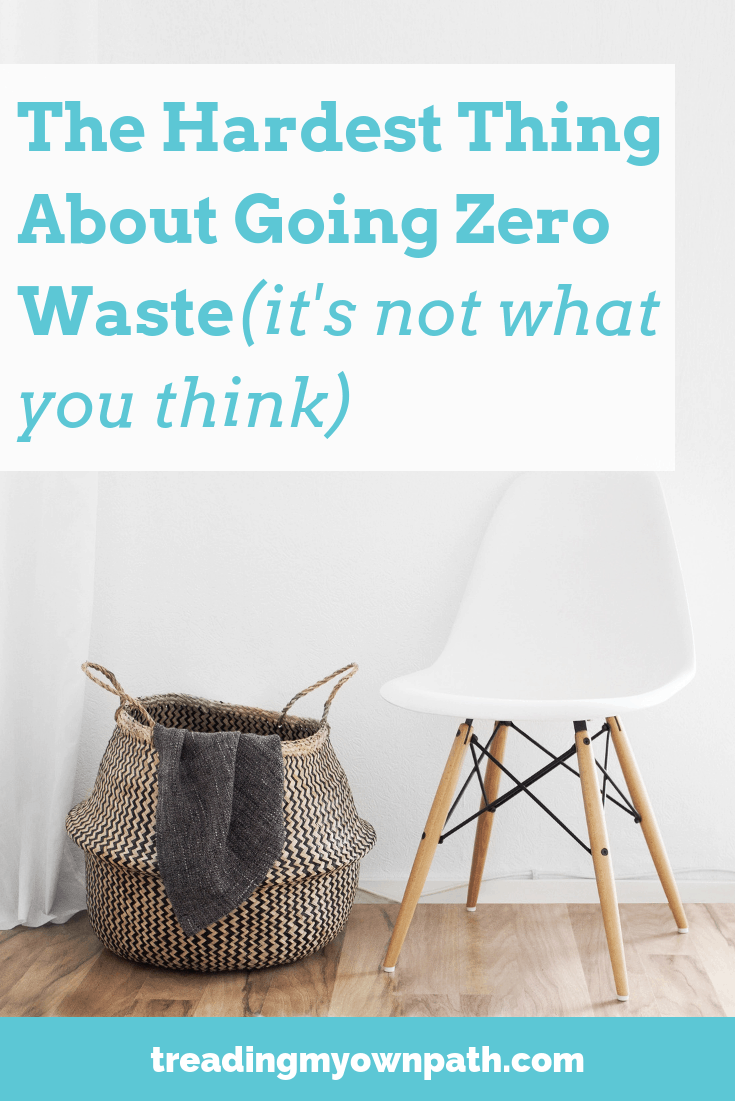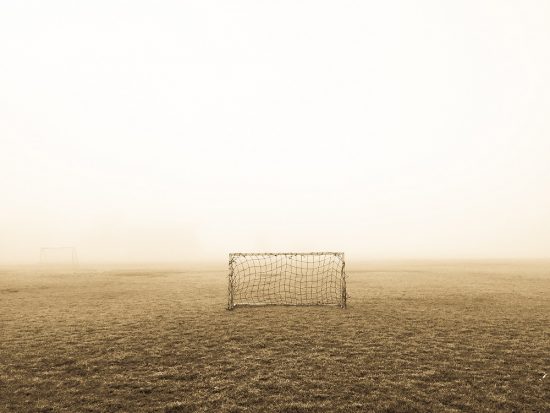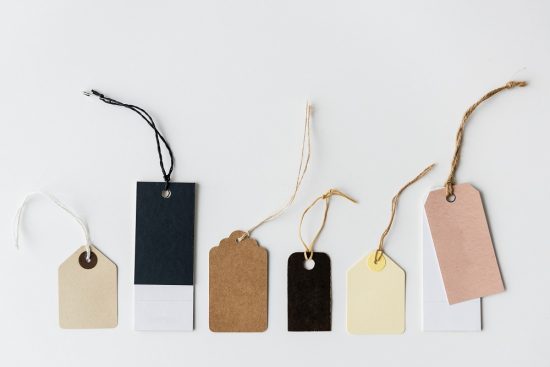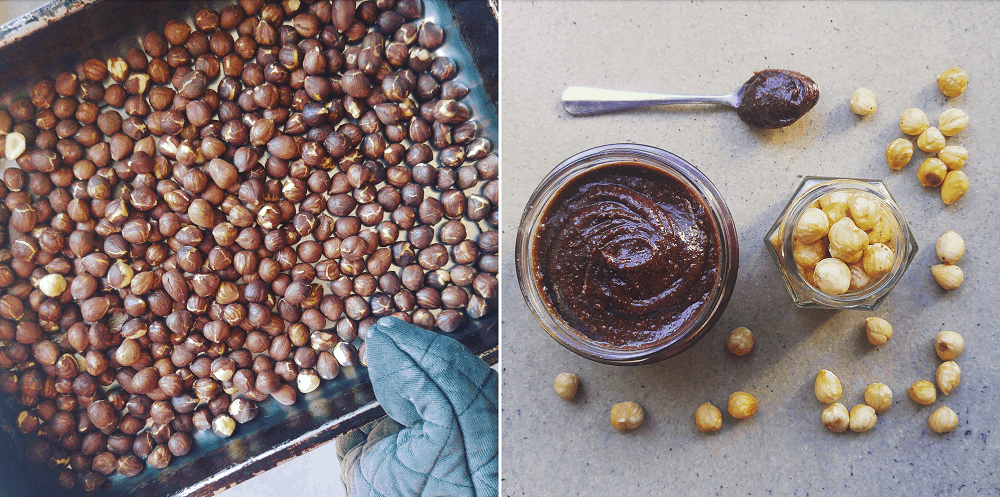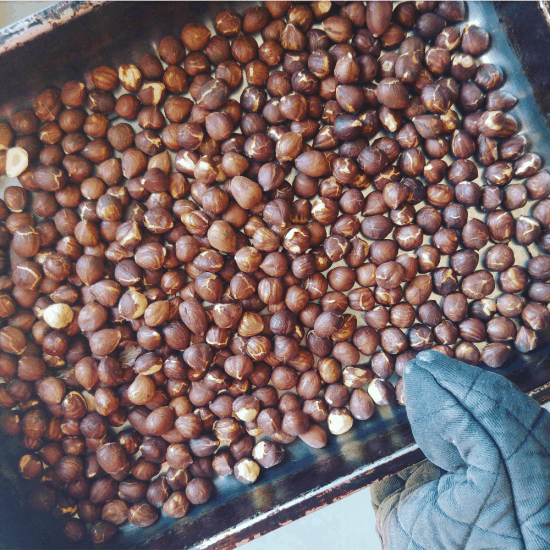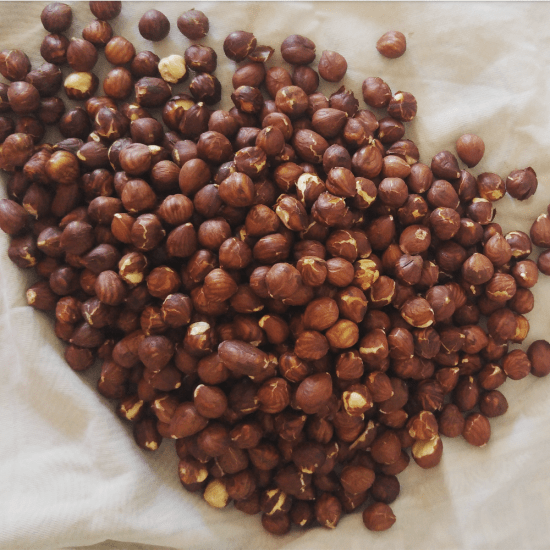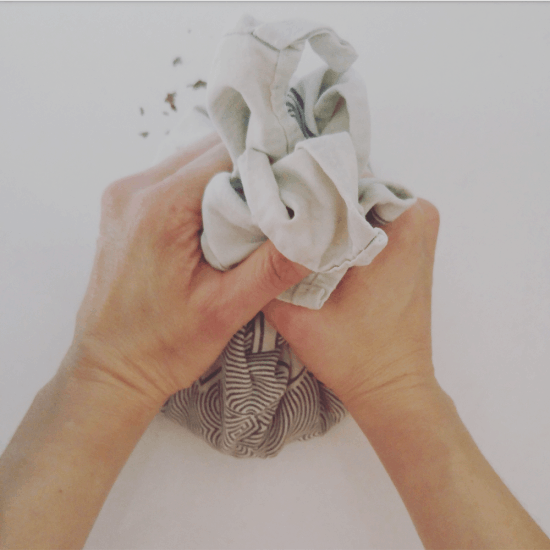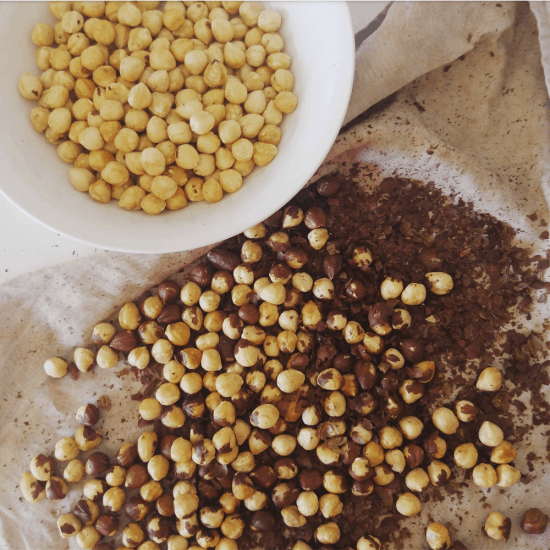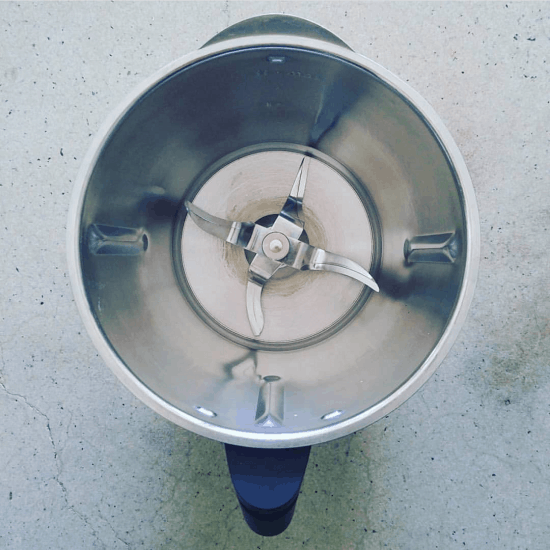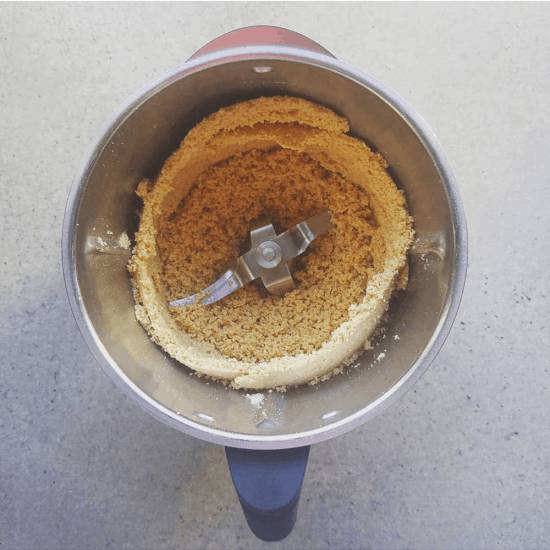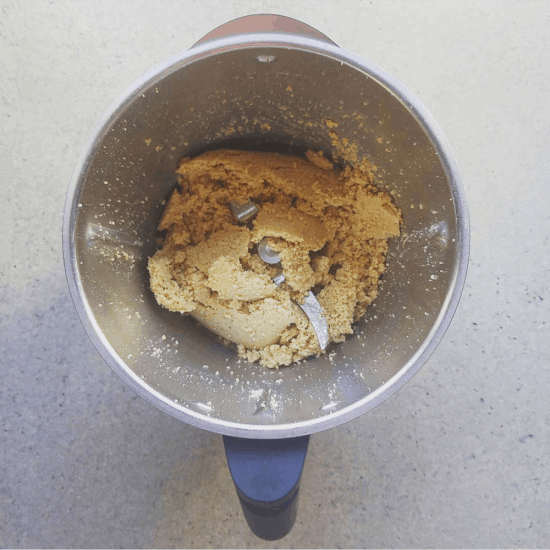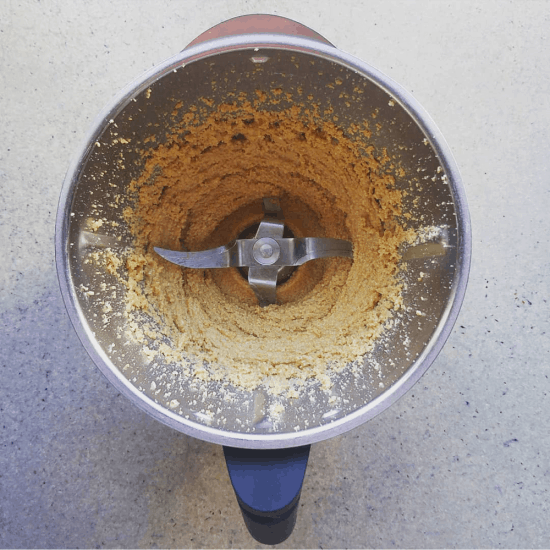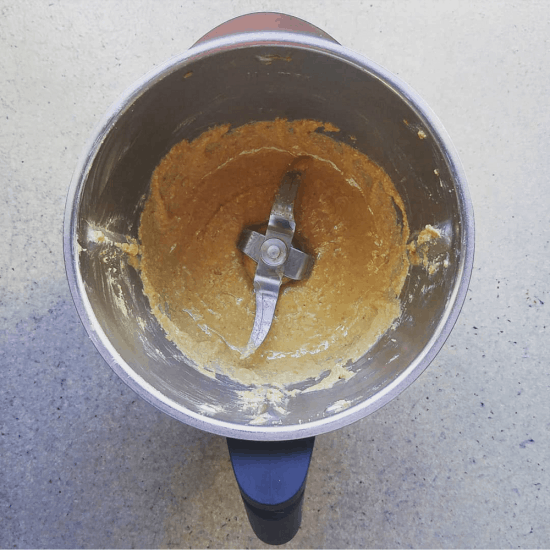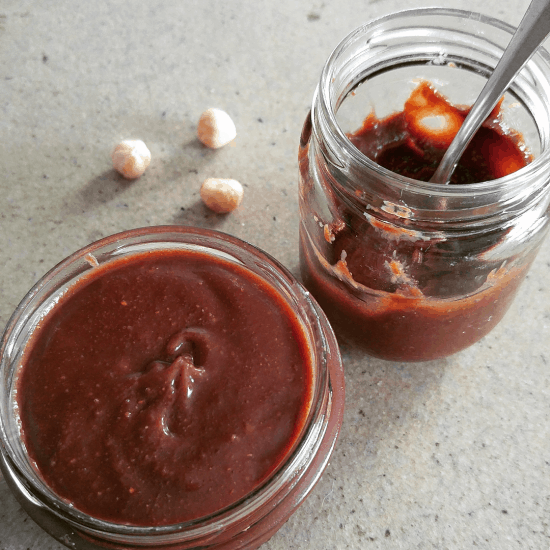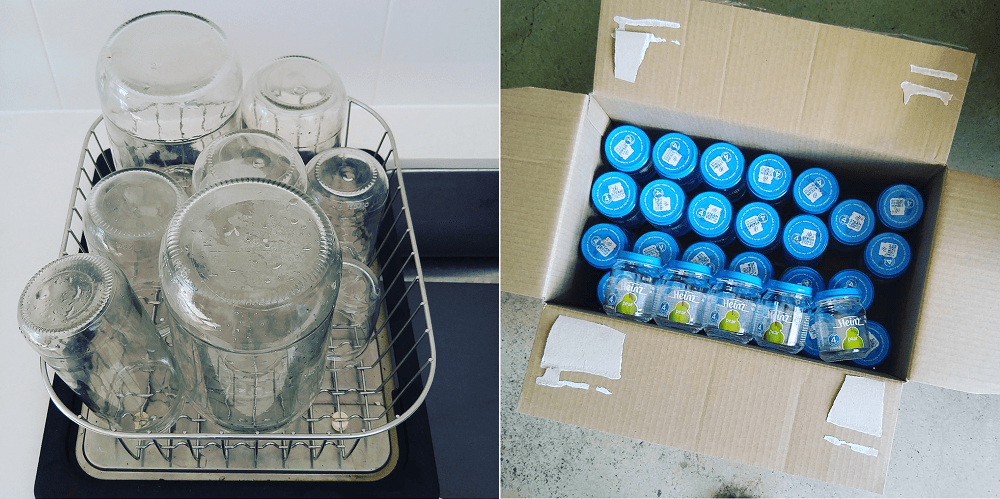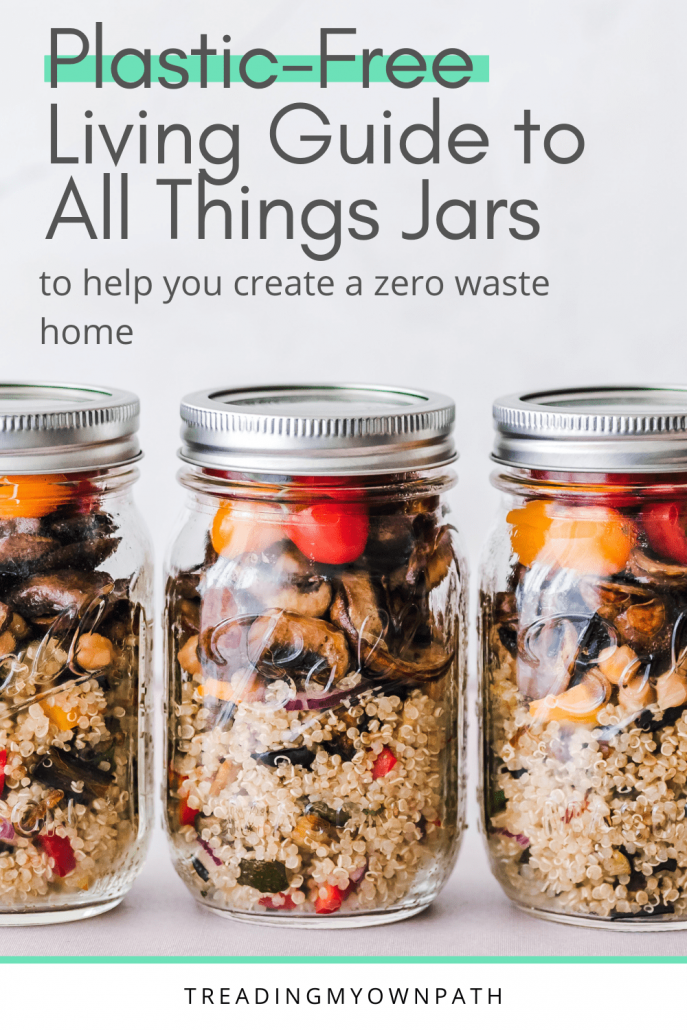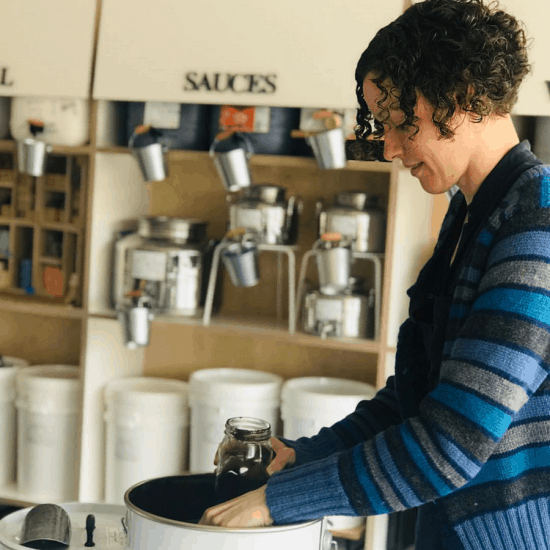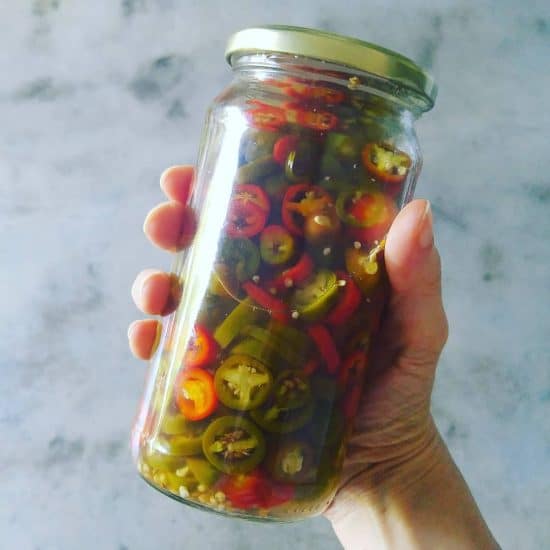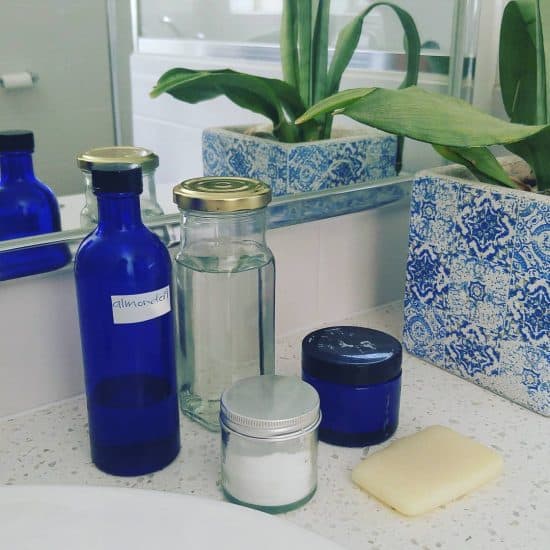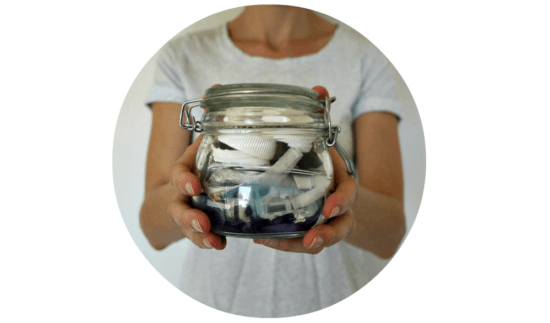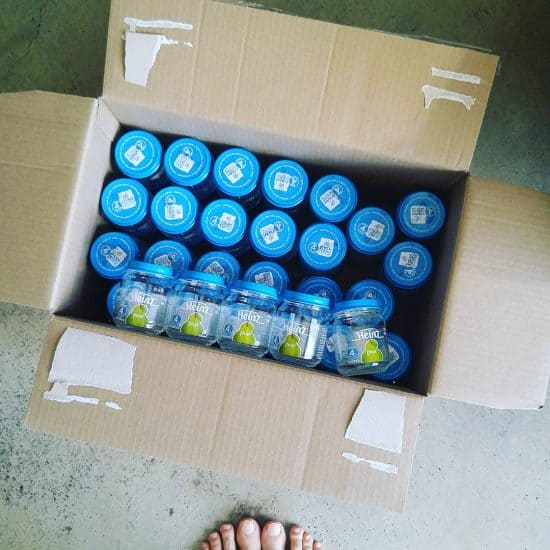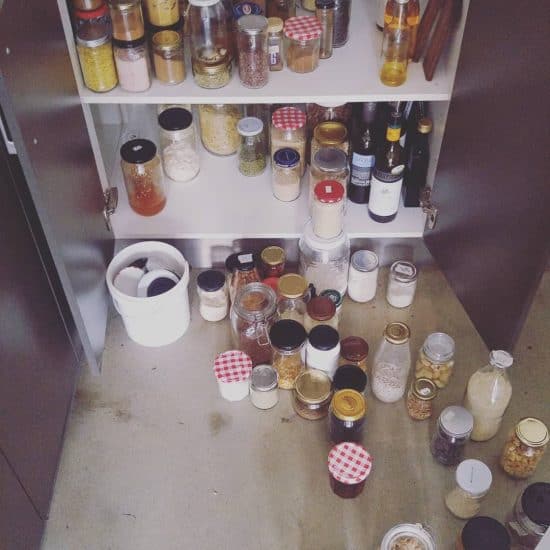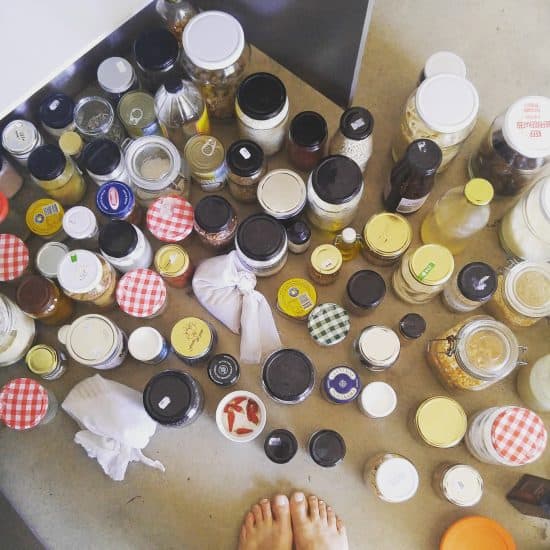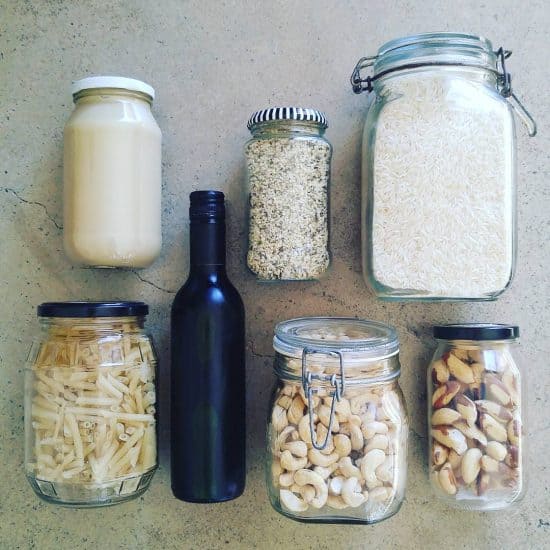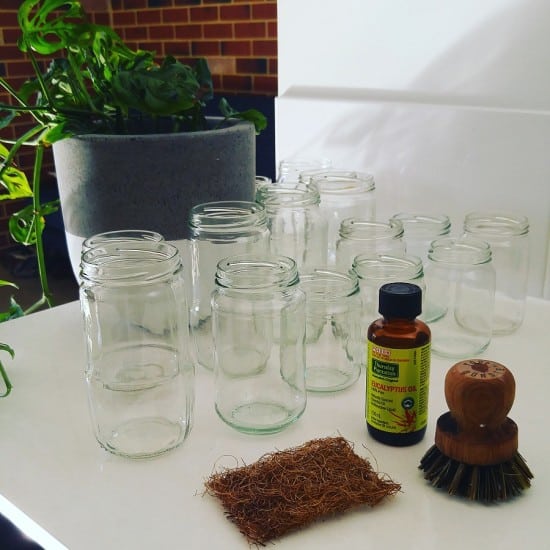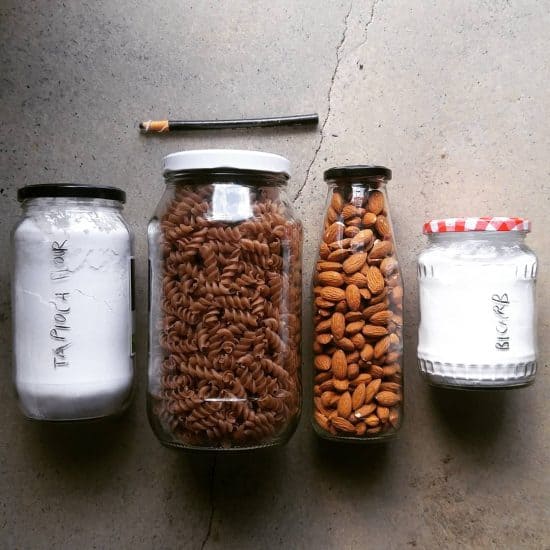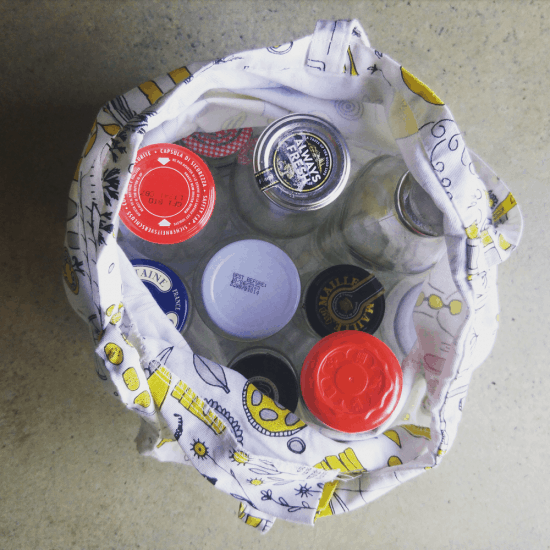8 Zero Waste, Plastic-Free and Sustainable Lifestyle Books for 21st Century Living
Times are changing. It wasn’t that long ago that the section in the library or in the local book store about green living had a couple of books about keeping chickens, preserving your entire homegrown harvest and going off-grid, a few more about saving the planet without even leaving your armchair, and not very much in between.
Plus, even finding that section in the first place was a mission.
But over the last few years, the number of books focused on living more sustainably and reducing waste, particularly for those of us that live in cities and suburbs, has blossomed.
The best thing is that these books are practical. Live in an apartment? Still in college? Have a baby or young kids? Trying to make your budget stretch further? There’s still plenty that can be done!
I’ve put together a list of some of my favourite books taking zero waste living, going plastic-free and making sustainable choices into the 21st century. They are all books I’ve actually read. They are all different, which is great: different people are on different journeys, and need different inspiration at different times.
Rather than compare, I’ve tried to articulate not only what the book is about but also the style and tone, and who it is ideal for.
Just because something isn’t featured here, that doesn’t mean it isn’t great – it probably means I haven’t read it (yet)! And I do intend to update this list as more good books are released into the world.
Lastly, this post does use some affiliate links. As always, I encourage supporting your local library or your local independent bookstore (if you’re lucky enough to have one) before buying online.
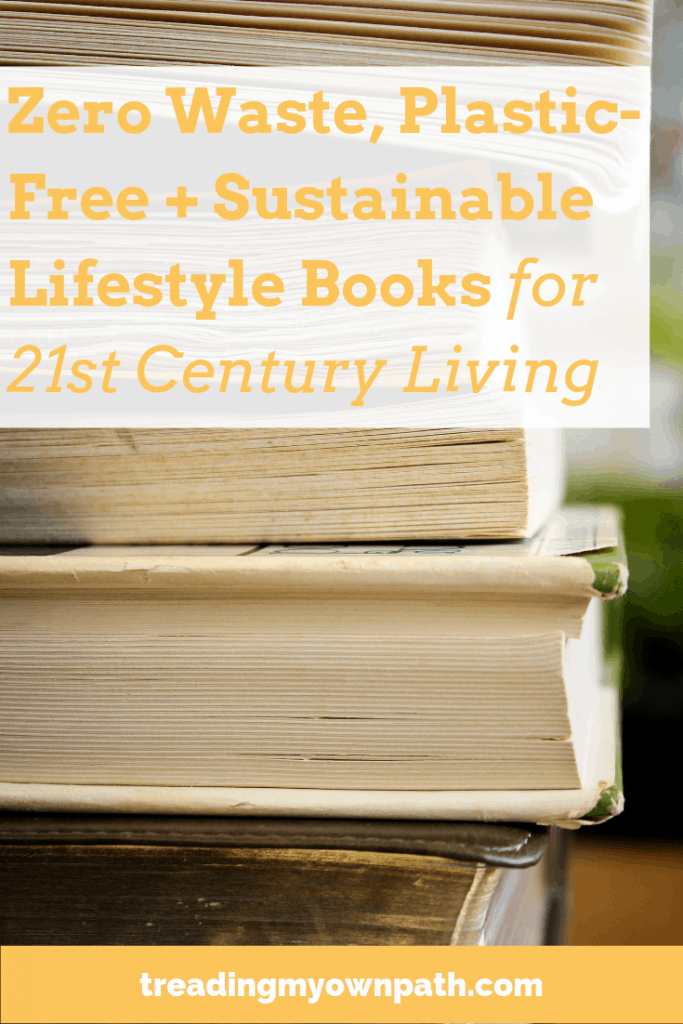
Zero Waste by Shia Su
Shia is from Germany, and has a popular Instagram account called Wasteland Rebel. She lives a zero waste lifestyle with her husband in urban Germany, and is also a minimalist, and vegan.
Zero Waste is a great beginner’s guide with colour photos, well structured and clearly laid out. The content is both thoughtful and practical, and her tone is helpful and non-judgmental. She explains the premise behind the zero waste movement and touches on some of the bigger issues at the core of the waste “problem”, whilst making this a book focused on solutions.
Shia talks about the choices she has made as well as offering alternatives and encouraging readers to find their own way.
Suited for those new to the zero waste movement, or interested in learning how others make zero waste living work for them
Worldwide delivery:
Australian stockists:
Angus & Robertson | Booktopia | Dymocks
UK stockists
Foyles | Hive Books | Waterstones
US Stockists:
Waste Not by Erin Rhoads
Erin is a zero waste blogger from Melbourne on the east coast of Australia, who writes the blog The Rogue Ginger. We started writing about plastic-free and zero waste living around the same time, although it took a while for us to connect – and when we did it was interesting to see how much similarity there was in our journeys. I’m very happy to call Erin a good friend of mine.
Erin’s book is an in-depth look into what zero waste is and a practical guide to wasting less. As well as the obvious things like food shopping and choosing reusables, Erin covers weddings, babies, mending, activism and some of the lesser talked-about aspects of living waste-free.
Waste Not is very comprehensive, and written in a gentle, encouraging tone with lots of stories of Erin’s journey along the way. There are recipes and how-to’s and plenty of step-by-steps, although Erin is very clear to emphasize that she does not advocate making everything from scratch.
Suited to anyone who wants a really comprehensive introduction and immersion into the topic, or who wants to get serious about zero waste living. This book isn’t just about why – it’s about how. It’s written in a way that is very easy to read, although the sheer amount of content means it will take a while to work through – trust me, it is most definitely worth it.
Worldwide Delivery:
Australian Stockists:
Angus & Robertson | Booktopia | Dymocks
UK Stockists:
Foyles | Hive Books | Waterstones
US Stockists:
Waste Not Everyday by Erin Rhoads
Erin wrote a second book Waste Not Everyday as a sister book to Waste Not, published a year apart. With Waste Not Everyday, Erin wanted to create something more digestible for people who weren’t quite ready to immerse themselves in zero waste, or who wanted quick tips and easy-to-grasp ideas to inspire rather than a comprehensive step-by-step road map to change.
Waste Not Everyday is divided into 365 tips, with simple recipes and heaps of great ideas for reducing, reusing and reconnecting. It’s really easy to dip in and out of, it’s fun and it’s still packed with good ideas.
Suited to anyone who find big in-depth books intimidating, or wants simple inspiration and is happy to go and do their own research to find out more.
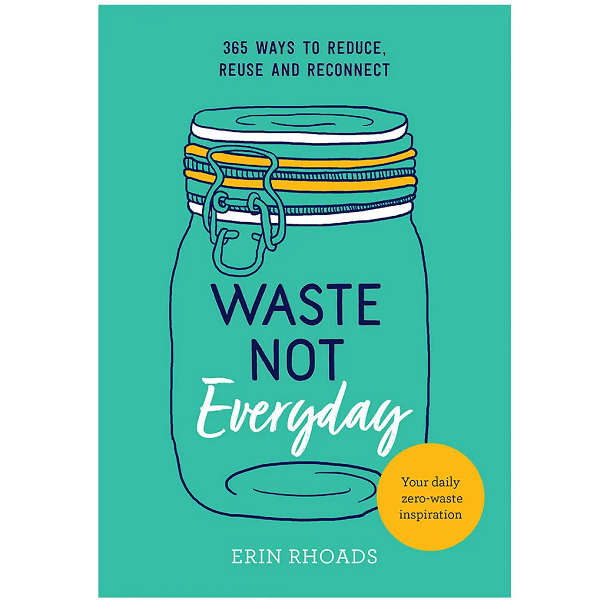
Worldwide Delivery:
Australian Stockists:
Angus & Robertson | Booktopia | Dymocks
Not yet published in UK/USA/CAN.
A Zero Waste Life in 30 Days by Anita Vandyke
Anita is from Sydney, Australia, although she spends half her time in San Fransisco, and has a popular zero waste Instagram account called Rocket Science (she’s also an aeronautical engineer, and currently studying medicine).
Anita’s book is very different to Erin’s – it’s small, light and easy to read although still full of ideas for living with less waste. Beautifully presented, with illustrations rather than photos. The tone and style is very similar to the posts Anita shares via Instagram, with hints, tip and tricks, giving the reader ideas and inspiration to take away.
Although the book is called A Zero Waste Life in 30 Days and presented as a tip for each day, the actual changes suggested are more about changing our mindsets, habits and behaviours than making simple daily swaps.
Suited to anyone who doesn’t have the time or inclination to read a more in-depth book, or who likes their information in bite-size portions. The book is an entree of the the ideas behind living a zero waste life, written to inspire and motivate rather than providing a step-by-step of how to get there.
Worldwide Delivery:
Australian Stockists:
Angus & Robertson | Booktopia | Dymocks
UK Stockists:
Foyles | Hive Books | Waterstones
US Stockists:
The Family Guide to Waste-Free Living by Lauren and Oberon Carter
Lauren and Oberon Carter are also from Australia (they live in Tasmania) but their zero waste living experience differs from the media stereotype of the young urban-dwelling woman-only lifestyle: they live on a 850m2 block in Hobart with their three daughters, whom they homeschool, and grow a lot of their own food. They also run the Zero Waste Tasmania Facebook page and an online store called Spiral Garden.
A Family Guide to Waste-Free Living covers a lot of topics not delved into by the other zero waste books on the market: there’s much more focus on doing things from scratch, growing food and the self-sufficiency side of zero waste living. It’s very much a family-friendly guide, with some less commonly seen but definitely practical DIYs, and beautiful photos throughout.
Suited to anyone who loves the idea of embracing the DIY, self-sufficiency side of living in a modern, 21st century way. This book is for those wanting to go further than the more straightforward and most talked-about swaps; and for those interested to learn more about how a family of five can live waste free.
Live Green by Jen Chillingsworth
Jen lives in Yorkshire in the UK with her husband and teenage son, and her Instagram account is Jen Little Birdie. She writes about slow and simple living rather than zero waste specifically, but there is so much alignment with her content that I had to include it here – plus I love her tone and voice.
Jen’s book is tiny – it almost fits in the palm of my hand – yet it packs the content in. This book is brimming with ideas. It’s beautifully illustrated in full colour, with six sections: Green Home & Garden, Eco Household, Eat Green, Slow Fashion, Natural Beauty and Simple Christmas. The concept is one idea a week for a whole year. Jen is thoughtful, thorough and there are lots of practical how to’s and recipes to support the ideas and help the reader take next steps.
Suited to anyone at the beginning of their sustainability journey or looking for some next steps, who wants ideas for living more sustainably in an easily digestible format – but still with practical how-to’s. With thoughts on energy efficiency, slow fashion and mindfulness, Live Green covers a broader range of topics than many zero waste books. And that’s a good thing – these issues are all interconnected, after all.
Worldwide Delivery:
Australian Stockists:
Angus & Robertson | Booktopia | Dymocks
UK Stockists:
Foyles | Hive Books | Waterstones
US Stockists:
Less Stuff by Lindsay Miles
Of course I’m including my own book here! If you haven’t met me before, I’m Lindsay, and I’ve been living plastic-free and zero waste since 2012, and writing this blog since 2013. My minimalism journey (or my journey to ‘enough’ as I like to call it, because labels can be so polarising) started because I was struggling with having too much stuff and hating the idea of waste.
It took a lightbulb moment for me to realise that keeping stuff I didn’t need, didn’t use and didn’t like was actually a huge waste – there had to be (and is) another way.
Less Stuff is a book about decluttering but it’s more than that, it’s about redefining our relationship with stuff. How we choose things, how we use things, and most importantly – what we can do with our things when we’re done with them. It’s a practical guide with a step-by-step approach, and in particular there’s a big focus on the ‘how’ of finding new homes for our old things.
Suited to anyone who thinks they’ve got too much stuff, those of us who feel guilty throwing things in the bin and anyone wanting to redefine their relationship with their things.
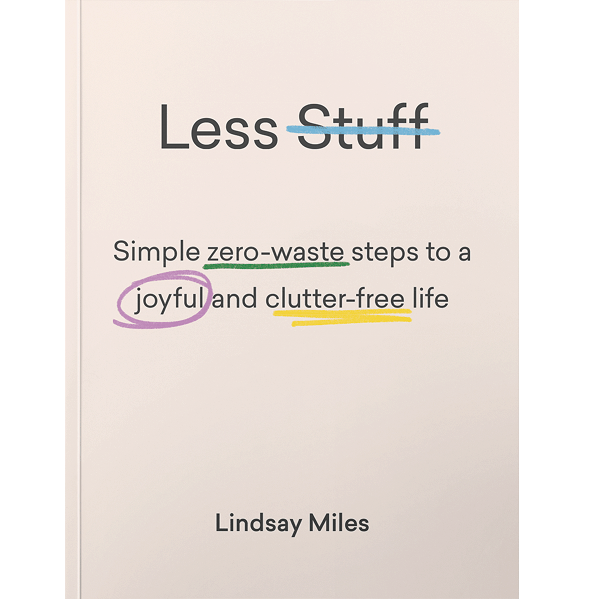
Worldwide Delivery:
Australian Stockists:
Angus & Robertson | Booktopia | Dymocks
UK Stockists:
Foyles | Hive Books | Waterstones
US Stockists:
Simplicious Flow by Sarah Wilson
Sarah Wilson is a journalist and TV presenter most well-known as the founder of I Quit Sugar, but she is also passionate about reducing food waste (among other things). Her last I Quit Sugar book, Simplicious Flow is actually a zero-waste cookbook.
With Simplicious Flow Sarah wanted to do things differently. Not just with the recipes, but with the whole cookbook-making process (she wrote an interesting piece about the behind-the-scenes here). Talking of content, this book is packed full: there are 348 recipes that range from the kinds of recipes you’d expect in a cookbook to a 3-page spread on using up jar dregs, and a banana cake that uses banana peels.
Suited to those who already have a bit of confidence in the kitchen and want to make more foods from scratch, and anyone passionate about reducing their food waste at home. I suspect this book might overwhelm absolute beginners partly due to its sheer size and partly due to the ‘flow’ which means recipes move from one to another. Sarah’s recipes use a lot of meat, fish, eggs and dairy so if you’re vegan or plant-based this is something to consider. It’s family-friendly, with recipes for kids included.
As I said, I’m hoping to add more to these as I get round to reading them. On my to-read list, Tara Button’s A Life Less Throwaway, Kathryn Kellogg’s 101 Ways to Go Zero Waste and Mike Berners-Lee’s How Bad are Bananas: The Carbon Footprint of Everything. All other suggestions welcome!
Now I’d love to hear from you! Tell me – what good books on sustainability have you read? Which did you love? Which didn’t quite work for you? Have you read any of these and what were your thoughts? Any new releases you’re looking forward to reading? Share your thoughts in the comments below!


